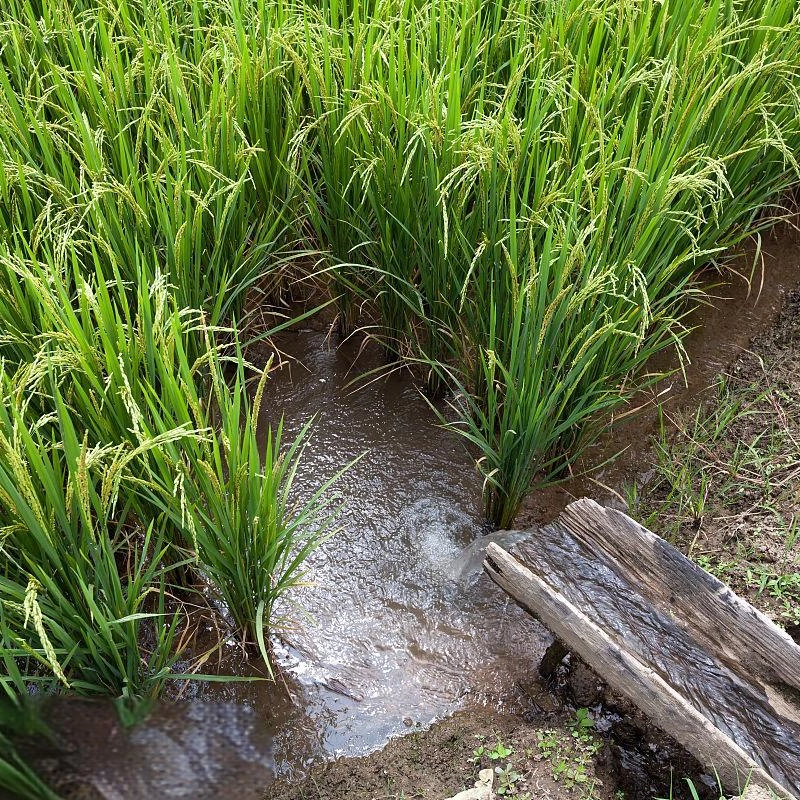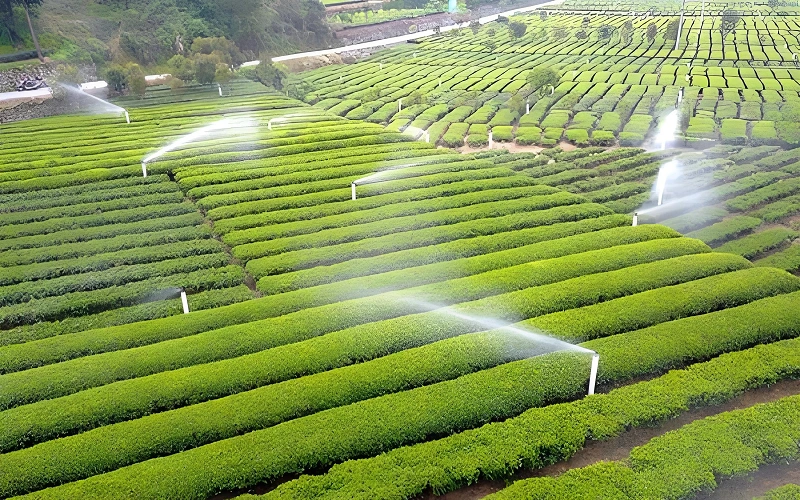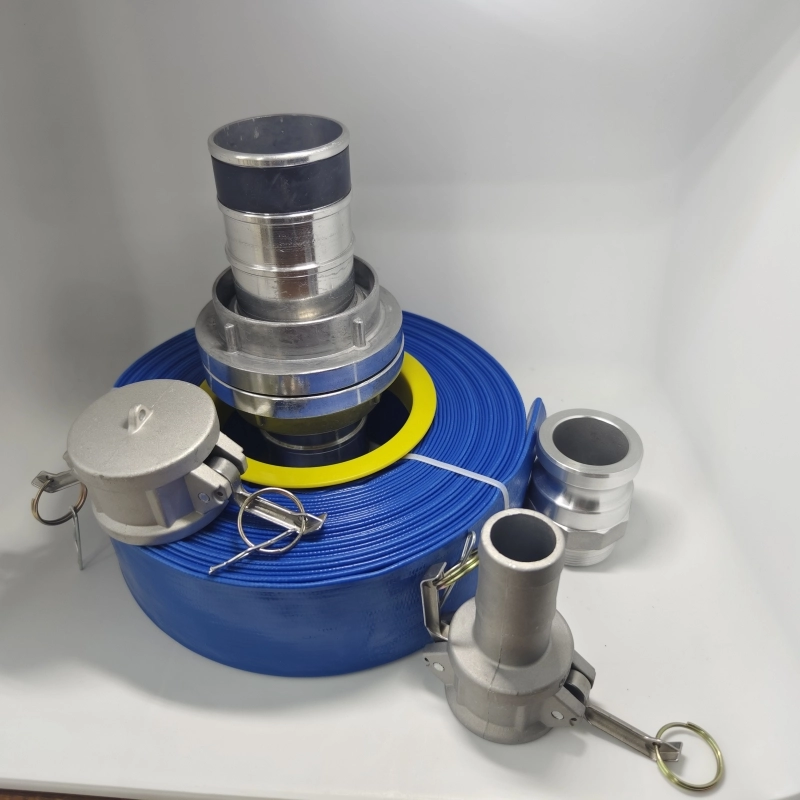How do agricultural irrigation systems work?
Agricultural irrigation systems are essential for delivering water to crops in a controlled and efficient manner, ensuring optimal growth and yield. These systems utilize a combination of components to source, transport, and distribute water to fields, adjusting to the specific needs of different crops and environments.

What is agricultural irrigation systems?
Agricultural irrigation systems are designed to deliver water to crops in a controlled manner, ensuring they receive the necessary moisture for optimal growth and yield. These systems are crucial in agriculture, particularly in regions with insufficient rainfall or irregular water distribution. Here’s a comprehensive overview of agricultural irrigation systems:

Types of Agricultural Irrigation Systems
Surface Irrigation
Flood Irrigation: Water is allowed to flow freely over the field, flooding the area. It’s simple and low-cost but can be inefficient due to water loss through runoff and evaporation.
Furrow Irrigation: Water flows through small channels (furrows) between crop rows. It is more controlled than flood irrigation but still susceptible to water loss.
Basin Irrigation: Water is applied to small, leveled sections of land enclosed by dikes. This method is efficient for crops like rice that need standing water.
Sprinkler Irrigation
Center Pivot Systems: A long, rotating arm with sprinkler heads that pivot around a central point, irrigating crops in a circular pattern. Efficient for large fields.
Lateral Move Systems: Similar to center pivots but move in a straight line, irrigating rectangular fields.
Portable Sprinklers: Mobile units that can be moved as needed. Suitable for smaller fields or irregularly shaped areas.
Drip Irrigation
Surface Drip Irrigation: Delivers water directly to the plant’s base through a network of tubes and emitters. Highly efficient with minimal water waste.
Subsurface Drip Irrigation: Similar to surface drip but the tubes are buried underground. This method reduces evaporation and runoff further.
Subsurface Irrigation
Buried Drip Lines: Water is delivered directly to the root zone through buried tubing. Efficient and reduces evaporation.
Capillary Systems: Utilize the natural capillary action of the soil to distribute water from below the root zone upward.
Manual Irrigation
Hand Watering: Using watering cans, hoses, or buckets to water plants. Labor-intensive but provides precise control.
Simple Gravity-fed Systems: Using buckets or tanks elevated above the field to allow gravity to distribute water.
Automated Irrigation Systems
Smart Irrigation Controllers: Use weather data and soil moisture sensors to adjust watering schedules automatically.
Timers and Sensors: Basic automation tools that can be used to set specific watering times and durations.
Components of Agricultural Irrigation Systems
Agricultural irrigation systems are composed of several key components that work together to deliver water efficiently to crops. Here's a detailed list of the main parts:
1. Water Source
Wells: Access groundwater for irrigation.
Rivers, Lakes, and Reservoirs: Provide surface water for irrigation.
Rainwater Harvesting Systems: Collect and store rainwater for use.
2. Pumps
Centrifugal Pumps: Used to move water from the source to the fields.
Submersible Pumps: Used for deep wells to pump water to the surface.
Jet Pumps: Often used for wells where the water level is above the pump.
3. Pipes and Tubing
Main Supply Lines: Typically made of PVC, HDPE, or polyethylene, these transport water from the source to the fields.
Lateral Lines: Distribute water within the field, connecting to emitters or sprinklers.
4. Emitters and Sprinkler Heads
Drip Emitters: Deliver water slowly and directly to the plant roots.
Micro-sprayers: Distribute a fine mist over a small area.
Sprinkler Heads: Distribute water over larger areas and come in various types such as impact, rotary, and fixed.
5. Valves
Manual Valves: Allow for manual control of water flow.
Automated Valves: Controlled by timers or sensors for automated irrigation.
Solenoid Valves: Electrically operated valves used in automated systems.
6. Controllers and Timers
Basic Timers: Schedule watering times and durations.
Smart Controllers: Adjust watering schedules based on weather data and soil moisture levels.
Manual Controllers: Allow manual control over irrigation schedules.
7. Filters
Screen Filters: Remove large particles from the water.
Disc Filters: Provide finer filtration for systems like drip irrigation.
Sand Filters: Used for larger debris and organic matter removal.
8. Pressure Regulators
Inline Pressure Regulators: Maintain consistent water pressure within the system.
Adjustable Pressure Regulators: Allow customization of pressure settings for different zones.
9. Fertigation and Chemigation Systems
Injectors: Add fertilizers or chemicals to the irrigation water.
Mixing Tanks: Mix fertilizers or chemicals with water before distribution.
10. Backflow Preventers
Anti-siphon Valves: Prevent contamination of the water source by stopping backflow.
Check Valves: Ensure water flows in one direction only, preventing backflow.
11. Moisture Sensors and Weather Sensors
Soil Moisture Sensors: Measure soil moisture levels and adjust irrigation accordingly.
Rain Sensors: Prevent irrigation during rainfall.
Weather Stations: Provide data on weather conditions to optimize irrigation schedules.
12. Monitoring and Control Systems
Flow Meters: Measure the amount of water used.
Remote Monitoring Systems: Allow remote control and monitoring of the irrigation system via smartphone or computer.
13. Energy Sources
Electricity: Powers pumps and automated systems.
Solar Panels: Provide renewable energy for off-grid systems.
Diesel Generators: Used where electricity is not available.
14. Connectors and Fittings
Elbows, Tees, and Couplings: For connecting pipes and changing directions.
Adapters: Connect pipes of different sizes or materials.
End Caps and Plugs: Seal the ends of pipes.
15. Support Structures
Stakes and Holders: Support drip lines and hoses.
Mounting Brackets: Hold pipes and emitters in place.
An agricultural irrigation system is a complex assembly of various components that work together to ensure efficient water delivery to crops. Proper selection and maintenance of these components are crucial for the effective operation and longevity of the irrigation system.

Benefits of Agricultural Irrigation Systems
Increased Crop Yield: Ensures crops receive the necessary water, leading to healthier plants and higher yields.
Water Efficiency: Modern irrigation systems minimize water waste through precise delivery and reduced evaporation.
Flexibility: Allows for farming in areas with inadequate natural rainfall.
Improved Soil Health: Proper irrigation prevents soil erosion and maintains soil structure.
Reduced Labor: Automated systems reduce the need for manual watering, saving time and effort.
Agricultural irrigation systems are essential tools in modern farming, enabling efficient water use and ensuring crop productivity. By selecting the appropriate system based on crop needs, soil type, water availability, and field size, farmers can optimize their irrigation practices, conserve water, and improve agricultural output.

How to work?
Agricultural irrigation systems work by delivering water to crops in a controlled and efficient manner. Here's a detailed explanation of how these systems function:
Overview of Agricultural Irrigation Systems
The primary goal of an irrigation system is to supplement natural rainfall to meet the water needs of crops, ensuring optimal growth and yield. This is achieved through a combination of components that work together to source, transport, distribute, and manage water. Here’s how it all comes together:

Key Components and Their Functions
Water Source
Wells, Rivers, Lakes, Reservoirs: These are the primary sources of water. Water is drawn from these sources and directed into the irrigation system.
Rainwater Harvesting: Collects and stores rainwater for use during dry periods.
Pumps
Centrifugal, Submersible, and Jet Pumps: These pumps move water from the source to the fields. They ensure a consistent supply of water at the necessary pressure.
Pipes and Tubing
Main Supply Lines: Transport water from the source or pump to the fields. Made from durable materials like PVC or polyethylene.
Lateral Lines: Distribute water from the main supply lines to specific areas within the field.
Emitters and Sprinkler Heads
Drip Emitters: Deliver small amounts of water directly to the base of each plant, minimizing evaporation and runoff.
Sprinkler Heads: Spray water over a larger area, simulating natural rainfall.
Valves and Controllers
Manual and Automated Valves: Control the flow of water within the system. Automated valves can be controlled by timers or sensors.
Controllers and Timers: Set schedules for when and how long water is delivered to the crops.
Filters and Pressure Regulators
Filters: Remove debris and particulates from the water, preventing clogging of emitters and sprinklers.
Pressure Regulators: Maintain consistent water pressure to ensure even distribution across the system.
Fertigation and Chemigation Systems
Injectors and Mixing Tanks: Allow fertilizers and chemicals to be mixed with irrigation water, providing nutrients directly to the plants.
Backflow Preventers
Anti-siphon Valves and Check Valves: Prevent contaminated water from flowing back into the clean water source.
Moisture and Weather Sensors
Soil Moisture Sensors: Measure the moisture level in the soil and adjust irrigation schedules accordingly.
Rain Sensors: Automatically shut off the system during rainfall to conserve water.
Weather Stations: Provide data to optimize irrigation schedules based on weather conditions.
Monitoring and Control Systems
Flow Meters and Remote Monitoring Systems: Track water usage and allow for remote control and monitoring of the irrigation system via smartphones or computers.

How the System Works
Water Collection and Delivery
Water is sourced from wells, rivers, lakes, reservoirs, or rainwater harvesting systems.
Pumps are activated to move water from the source into the main supply lines.
Water Distribution
Water flows through main supply lines to lateral lines, reaching various sections of the field.
Valves and controllers regulate the flow and distribution of water.
Water Application
Drip Systems: Water is delivered directly to the root zone of each plant via emitters.
Sprinkler Systems: Water is sprayed over a larger area through sprinkler heads, providing uniform coverage.
Surface and Subsurface Systems: Water flows over the soil surface or is delivered below the soil surface to reach plant roots.
Automated Control
Timers and smart controllers schedule watering times and durations.
Sensors adjust watering based on soil moisture levels and weather conditions, optimizing water use and preventing over-watering.
Nutrient Delivery (Optional)
Fertigation systems mix fertilizers with irrigation water, delivering nutrients directly to the plants.
Monitoring and Maintenance
The system is monitored for water usage, pressure, and performance.
Regular maintenance ensures filters are clean, emitters and sprinklers are unclogged, and all components function properly.
Agricultural irrigation systems are designed to deliver water efficiently and precisely to crops, ensuring they receive the necessary moisture for healthy growth. By integrating various components and technologies, these systems optimize water use, reduce labor, and enhance crop yields, making them essential tools in modern agriculture.
Suggestions for planning and constructing irrigation systems
When you are planning to build your own irrigation system, you should pay attention to the detailed suggestions.
1. Assess Your Needs
Determine Water Requirements:
Identify the types of crops you will be growing and their specific water needs.
Calculate the total area to be irrigated.
Evaluate Water Source:
Determine the availability and reliability of your water source (e.g., well, river, reservoir).
Check for water quality and quantity to ensure it meets the needs of your crops.
Budget Considerations:
Define your budget for the irrigation system.
Consider initial setup costs, maintenance costs, and potential water savings.
2. Choose the Right Irrigation System
Drip Irrigation:
Ideal for precise watering, reducing water waste, and minimizing weed growth.
Best for row crops, vegetables, and gardens.
Sprinkler Irrigation:
Suitable for larger fields and lawns.
Can be automated and adjusted for various spray patterns.
Soaker Hoses:
Simple and effective for raised beds and small gardens.
Easy to install and manage.
Surface Irrigation:
Practical for certain crops like rice that thrive in flooded conditions.
Cost-effective but may require leveling of fields.
3. Design the Irrigation Layout
Field Mapping:
Create a detailed map of your field, including plant locations, pathways, and water source.
Plan the layout of main lines, lateral lines, and emitters/sprinklers.
Component Selection:
Choose appropriate pipes, emitters, valves, pumps, and controllers based on your irrigation method.
Ensure all components are compatible and suitable for your specific needs.
4. Sourcing Materials and Equipment
Pipes and Tubing:
Use durable materials like PVC, HDPE, or polyethylene.
Ensure the correct diameter for adequate water flow and pressure.
Pumps:
Select a pump with the right capacity and pressure rating for your system.
Emitters and Sprinklers:
Choose emitters for drip systems or sprinkler heads for broader coverage.
Valves and Controllers:
Include manual or automated valves and smart controllers for efficient water management.
Filters and Pressure Regulators:
Install filters to prevent clogging and pressure regulators to maintain consistent water pressure.
5. Installation
Prepare the Site:
Clear the field of any debris and obstacles.
Level the land if necessary, especially for surface irrigation.
Install Main Supply Lines:
Dig trenches and lay the main pipes from the water source to the field.
Connect sections securely with fittings and hose clamps.
Set Up Valves and Controllers:
Install valves at key points for controlling water flow to different zones.
Set up timers and controllers for automated systems.
Lay Lateral Lines and Emitters:
Run lateral lines from the main supply line to individual rows or plants.
Attach emitters or sprinkler heads according to your layout design.
Test the System:
Turn on the water supply and check for leaks, clogs, and even water distribution.
Adjust emitters and sprinklers as needed for uniform coverage.
6. Maintenance and Monitoring
Regular Inspections:
Periodically check the system for leaks, blockages, and wear.
Clean filters and replace damaged components as necessary.
Monitor Water Usage:
Keep track of water usage to ensure efficient operation.
Adjust irrigation schedules based on weather conditions and crop needs.
Seasonal Adjustments:
Modify the system settings according to seasonal changes and plant growth stages.
Prepare the system for winter by draining water and protecting components from freezing.
Example Scenario
Scenario: Setting up a drip irrigation system for a 1-acre vegetable garden.
Steps:
Assess Needs:
Crop: Mixed vegetables (tomatoes, peppers, cucumbers).
Water Source: Well with a submersible pump.
Choose System:
Drip irrigation for precise watering and water conservation.
Design Layout:
Main supply line runs along the perimeter of the garden.
Lateral drip lines spaced 2 feet apart, covering the entire area.
Source Materials:
200 feet of 1-inch PVC main supply line.
2,000 feet of 1/2-inch drip tubing.
100 drip emitters, pressure regulator, and filters.
Installation:
Lay main supply line and connect to the pump.
Run lateral lines and install emitters near each plant.
Test the system, fix any leaks, and ensure even water distribution.
Maintenance:
Inspect the system weekly for any issues.
Clean filters monthly and replace any damaged emitters.
By following these steps and considering the specific needs of your crops and garden, you can set up an efficient and effective irrigation system that promotes healthy plant growth and conserves water.
![]() Design and construction of garden irrigation system.pdf
Design and construction of garden irrigation system.pdf



